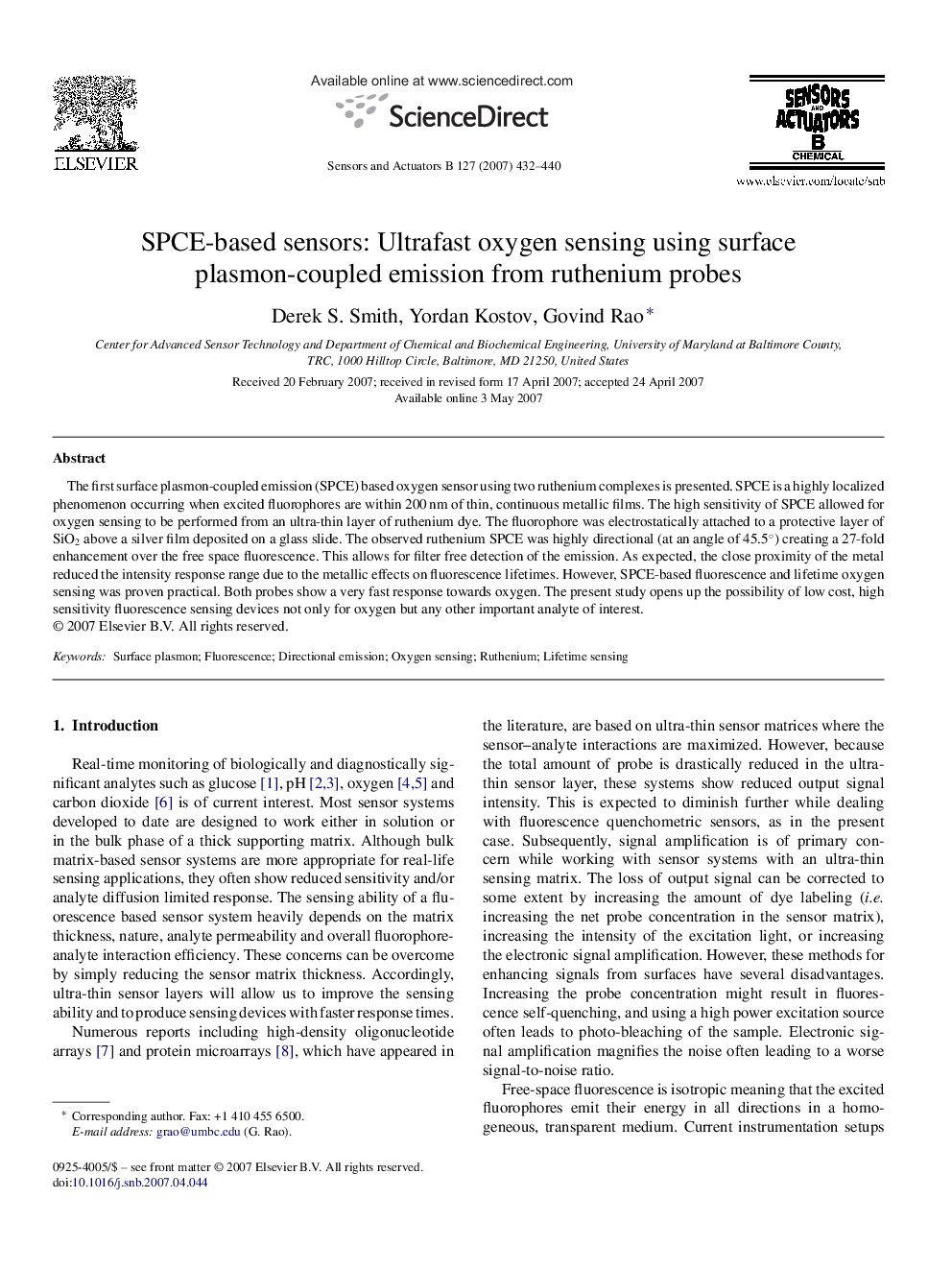| Article ID | Journal | Published Year | Pages | File Type |
|---|---|---|---|---|
| 751552 | Sensors and Actuators B: Chemical | 2007 | 9 Pages |
The first surface plasmon-coupled emission (SPCE) based oxygen sensor using two ruthenium complexes is presented. SPCE is a highly localized phenomenon occurring when excited fluorophores are within 200 nm of thin, continuous metallic films. The high sensitivity of SPCE allowed for oxygen sensing to be performed from an ultra-thin layer of ruthenium dye. The fluorophore was electrostatically attached to a protective layer of SiO2 above a silver film deposited on a glass slide. The observed ruthenium SPCE was highly directional (at an angle of 45.5°) creating a 27-fold enhancement over the free space fluorescence. This allows for filter free detection of the emission. As expected, the close proximity of the metal reduced the intensity response range due to the metallic effects on fluorescence lifetimes. However, SPCE-based fluorescence and lifetime oxygen sensing was proven practical. Both probes show a very fast response towards oxygen. The present study opens up the possibility of low cost, high sensitivity fluorescence sensing devices not only for oxygen but any other important analyte of interest.
